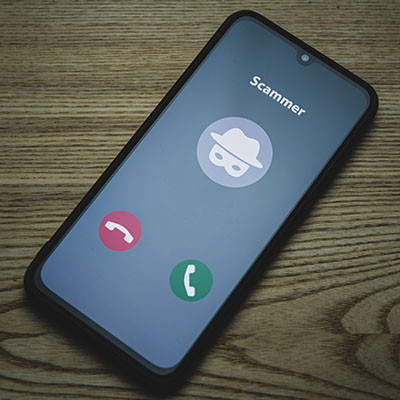EZ MSP Blog
When you think of a scammer, you probably think of someone looking to take advantage of someone for their own gain. While this isn’t wholly inaccurate, another variety exists to acknowledge… those who aim to scam the scammers. Let’s consider one such white-hat scammer, or “scam baiter,” a content creator who uses the alias “Kitboga,” Kit for short.
The world’s largest ticket retailer is in hot water after their parent company, Live Nation Entertainment filed an 8-K filing with the Security and Exchange commission admitting that they had been hacked to the tune of 1.3 terabytes of information. That amounts to 560 million customers’ personal information that has been stolen from the company’s servers. Today, we take a look at the hack and what it means for consumers.
Have you ever heard of the “man-in-the-middle” attack or MitM? It’s a situation where your data is stolen by an onlooker who situates themselves in the right place at the right time. Data interception is a very real thing that your business should be prepared to fight against. Let’s discuss some strategies you can use to counter these sneaky attacks.
Unsurprisingly, some of the biggest retail days of the year are some of the biggest days for scams, the entire holiday season seeing an increase in threats toward retailers and, as a result, the consumers that are just looking for that perfect gift for their loved ones. Let’s review some statistics and trends to see what insights we can glean.
Social media scams encompass fraudulent activities and deceptive schemes that occur across various social media platforms. These scams target users on platforms like Facebook, X (formerly Twitter), LinkedIn, and numerous others, irrespective of their age or background. They exploit individuals' trust, curiosity, or lack of awareness. Social media scams manifest in various forms, and the following are some common examples.
Phishing attacks have consistently been prominent in cybercrime throughout the past few years, not only due to their efficacy but also because there are so many avenues wherein phishing can be attempted. The first that comes to mind is email, of course, but you and your team need to keep these others in mind.
Take, for instance, a phishing voicemail…dubbed, naturally, a “phoicemail.”
It hasn’t been very long since T-Mobile experienced its latest major hack, but unfortunately, here we are again. Hackers have again accessed customer data, with 37 million customers being affected amongst both their prepaid and subscription-based accounts.
Let’s dive into the situation, and what can be learned from it.
While many small businesses shrug off cybersecurity needs as too expensive an investment for an organization of their size, this is a potentially catastrophic mistake. The fact of the matter is that small businesses are regularly targeted by cyberattacks, making the aforementioned cybersecurity needs even more needed.
With so many threats out in the world, it’s no surprise that some of them target undiscovered vulnerabilities. These types of threats use what are called zero-day exploits to make attempts at your sensitive data and technology infrastructure. What is it about zero-day exploits that you must keep in mind during your day-to-day operations and in planning for the future?
Sometimes the worst scams out there are the simplest ones. Hackers don’t need a fancy or complicated malware or algorithm to create chaos for your organization; all they have to do is convince you that the email you’ve received in your inbox is from someone of authority within your business. Let’s go over how a business email compromise is pulled off and why you need to be wary of threats like these.
Due to the almost faceless nature of many cybercrime acts, it can be easy to see them as nothing more than the acts themselves, which is of course not true in the slightest. Behind these attacks are people, and where people performing illegal acts are concerned, there will always be concerns about other criminal acts which perpetuate the ones at the surface.
Imagine this scenario: you’re going about your daily tasks when you receive an email from a cybersecurity company claiming that you have become the target of a hacking attack. Now, you don’t work in IT, so you’re not sure what your security agency is or what security policies or procedures you have in place, so you trust the message and respond to the email. Unfortunately, the message came from a cyberthreat, and now you are on their hook, line and sinker.
There is always the possibility that you have been involved with a data breach and you simply have not been contacted by the affected party. Plus, if a hacker has managed to crack a website or service without being detected, you wouldn’t be notified in any case, either. Ask yourself this question: if I were to be involved with a data breach, how would I know it, and what can I do about it? And what is my data being used for anyway?
Let me ask you a few questions—first, how confident are you that you could spot an online ruse, and second, did you know there’s a stain on your shirt right now?
Did you look?
If so, you’ve just fallen for the school playground version of social engineering, a serious threat. Let’s discuss the kind that you’re more likely to see in terms of your business’ cybersecurity.
Data breaches—any event where a business’ confidential data is viewed, copied, or stolen by an unauthorized person or party—are a serious problem. Unfortunately, they are also a serious problem that can be caused by no shortage of situations. Let’s review some of the causes of business data breaches so you’ll know what to keep an eye out for.




















